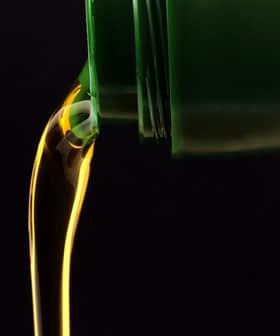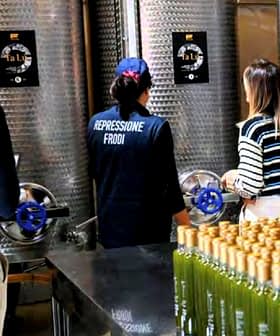Botanical Council Publishes Overview of Olive Oil Adulteration
A report by the American Botanical Council found that adulteration of extra virgin olive oil is still common due to financial incentives, lack of high-quality oil availability, and inadequate regulation. Consumers may be unknowingly purchasing olive oil mixed with lower-grade oils or other vegetable oils, which can be difficult to detect without modern analytical techniques, leading to a loss of health benefits and potential financial gain for fraudsters.
A report released this month by the American Botanical Council concluded that the adulteration of extra virgin olive oil remains “prolific.”
The report cited significant financial rewards, the low availability of high-quality extra virgin olive oil and inadequate screening from regulatory agencies as three of the reasons adulteration remains prevalent.
It’s really difficult to figure out if an olive oil is adulterated just by looking at the label. Some of the adulterations are very sophisticated and require modern analytical techniques to detect.
The most significant problem, according to the group, is the contamination of extra virgin olive oil with lower quality oils, which results in a less pure oil that does not offer the same health benefits as extra virgin oil.
“Savvy consumers may notice the difference in taste of adulterated olive oil and find it less flavorful,” Stefan Gafner, the chief science officer at the council, said. “In addition, there are some purported olive oil health benefits that the consumer may not receive if the olive oil is adulterated.”
See Also:Olive Oil FraudGafner said, based on the group’s research, consumers are simply not getting what they paid for.
To earn the “extra virgin” grade, olive oil must be extracted via mechanical methods — as opposed to chemical extraction — and must meet predetermined quality standards set up by the International Olive Council.
Instead of pure extra virgin olive oil, consumers may be unknowingly purchasing mixtures that include lower-grade olive oils or different types of vegetable oils, such as canola, soybean, hazelnut or sunflower.
The report indicated that these fraudulent mixtures are sometimes additionally compromised with additives such as beta-carotene, which masks the flavor of the cheaper oils, or with chemicals that alter the color. None of which, of course, is properly noted on the products’ labels.
“It’s really difficult to figure out if an olive oil is adulterated just by looking at the label,” Gafner said. “Some of the adulterations are very sophisticated and require modern analytical techniques to detect.”
Additionally, mislabeling a product cut with cheaper oils allows the distributor to charge a premium price for a sub-par product.
“There is a significant financial gain for fraudsters who might blend seed oils or refined or lower quality olive oils and sell them as extra virgin olive oil,” the authors wrote in the study. “Because testing is sporadic and expensive, the chance of being caught is relatively remote and the potential consequences not severe under the law of most countries.”
On the other hand, Gafner said, if a supplier is selling adulterated materials, the supplier’s reputation may become severely damaged, especially if the adulteration makes headlines.
“And there is always a risk of a lawsuit, of which there have been several against olive oil manufacturers here in the United States,” he said. “This is not only a blow to the reputation of a company, but can also lead to a substantial fine.”
The report said that testing of olive oils, which is conducted largely by government agencies, is inadequate because it is simply not a priority.
While consumers may not get the health benefits from “cut” oils that they expect to get, neither are they necessarily being harmed, according to the report and so the urgency for testing does not exist.
While, according to Gafner, “industry advocacy groups have become quite active in recent years, and have initiated testing in some instances,” the council’s report concluded that testing remains insufficient.
Nevertheless, the report calls for a “more determined global effort from authorities… to overcome the corrupt practices” involved in olive oil production.
“There needs to be more government support in export and import situations and higher penalties for those that abuse the regulations,” the report concluded.







